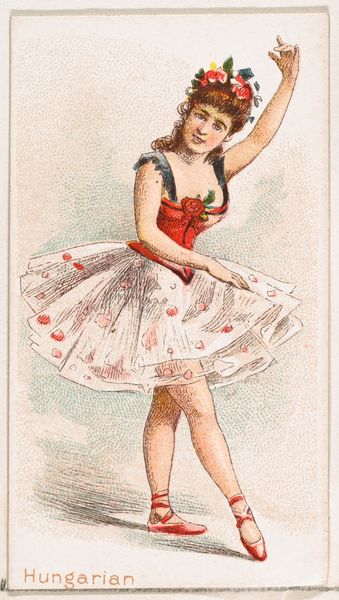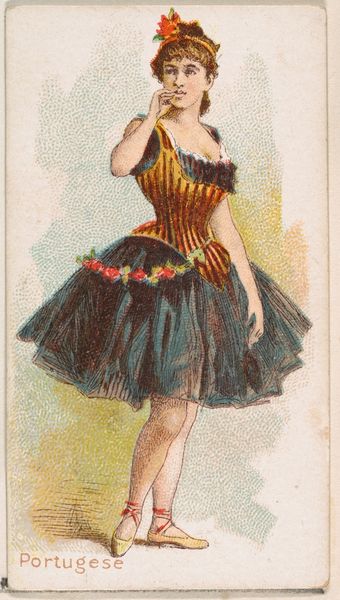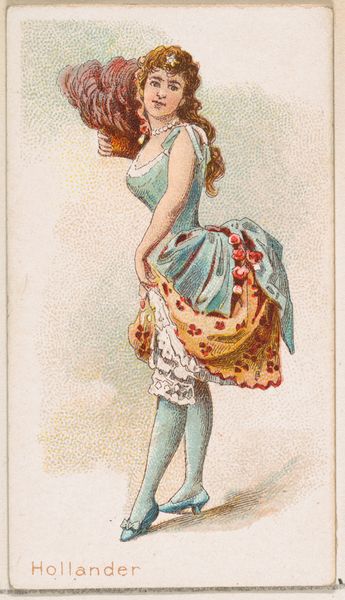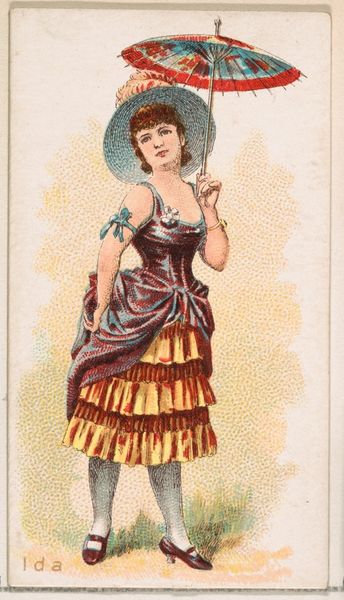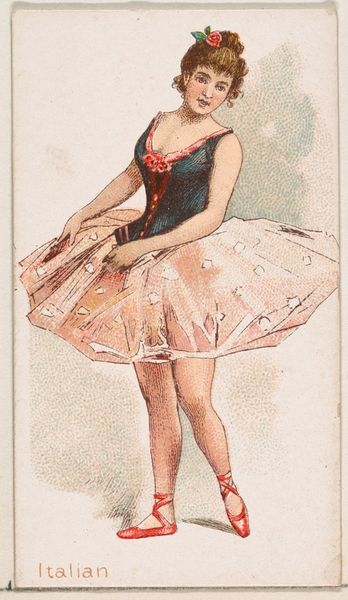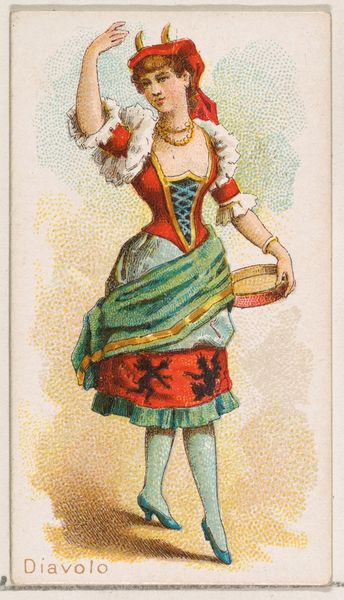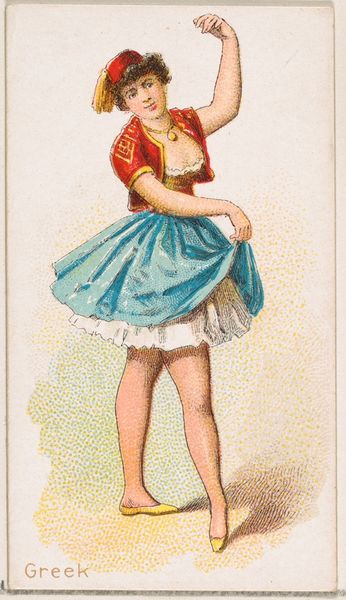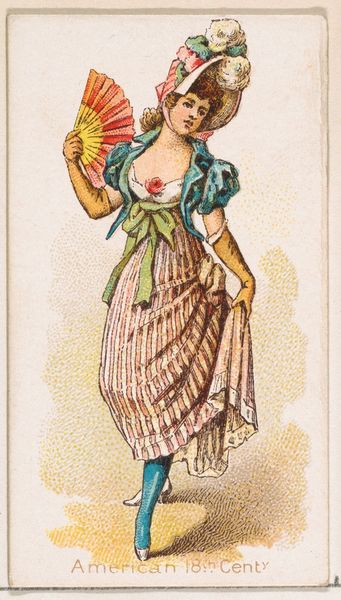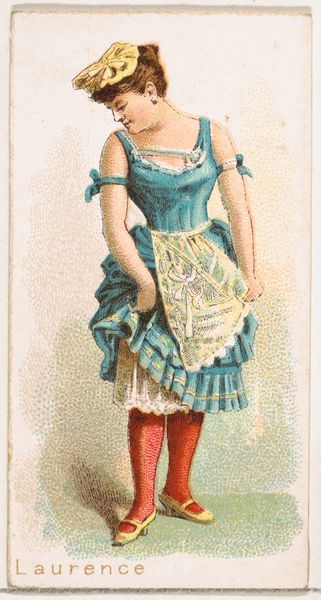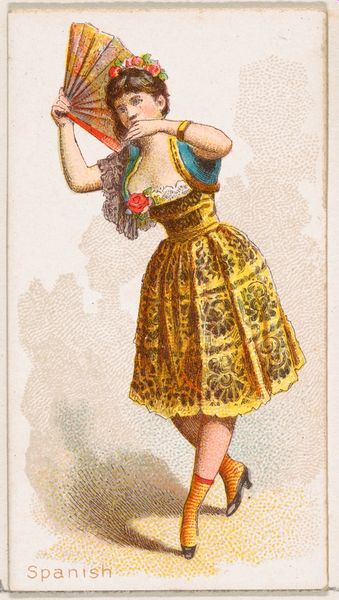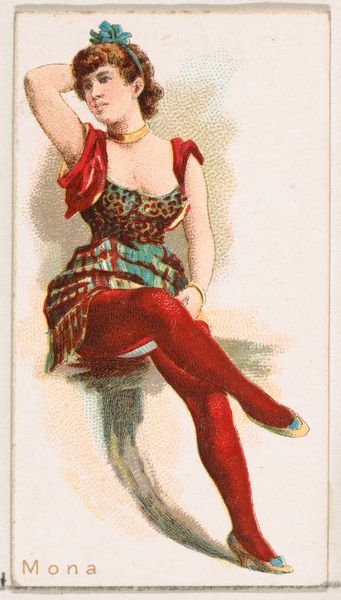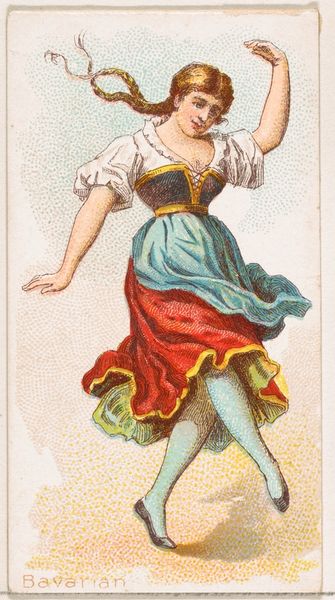
Cuban Dancer, from the Dancing Women series (N186) issued by Wm. S. Kimball & Co. 1889
0:00
0:00
Dimensions: Sheet: 2 11/16 × 1 7/16 in. (6.9 × 3.7 cm)
Copyright: Public Domain
Editor: This is "Cuban Dancer" from the Dancing Women series, made in 1889 by William S. Kimball & Company. It looks like a drawing, made with coloured pencil and then printed. I'm struck by the sort of flattened perspective, which reminds me of ukiyo-e prints. What's your take on this, looking at it as an art historian? Curator: What interests me is the mass production of this image and its function as a trade card for Wm. S. Kimball & Co., a cigarette manufacturer. The colored pencil drawing wasn't intended as high art; instead, it was part of a larger system of commodity culture. Editor: So you're saying it's less about the art and more about... selling tobacco? Curator: Exactly. Consider the materials. Inexpensive paper, colored pencils allowing for quick reproduction – everything points to efficient, low-cost manufacturing. This contrasts sharply with the traditional art world's emphasis on unique, handmade objects and durable precious materials like oil paint and canvas. Where does it fit into impressionism beyond its appearance? Editor: Right, I see your point. It looks like art, but it's really advertising, mass-produced and ephemeral. So, it’s a challenge to those traditional boundaries. Curator: Precisely. The image’s value resides not in its aesthetic qualities, though they are appealing, but in its role in the distribution and consumption of a widely available product, linked to female representation as a spectacle and the labor involved in producing these images en masse. Do you see this print any differently now? Editor: Yes, completely. I was initially drawn to the image itself, but now I'm thinking about all the factory workers who probably cranked these out. Curator: And that changes how we understand the “art,” doesn’t it? It reframes our consumption of art by examining labor and materiality, blurring those traditional boundaries.
Comments
No comments
Be the first to comment and join the conversation on the ultimate creative platform.
